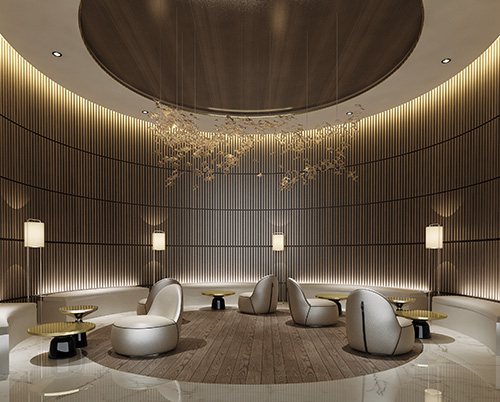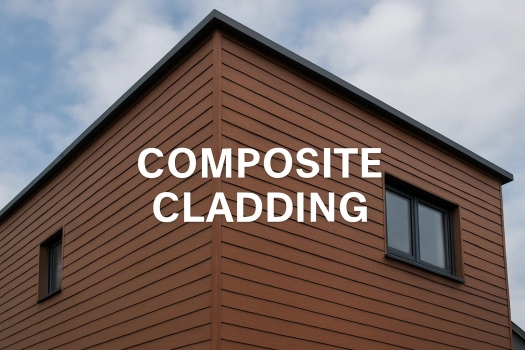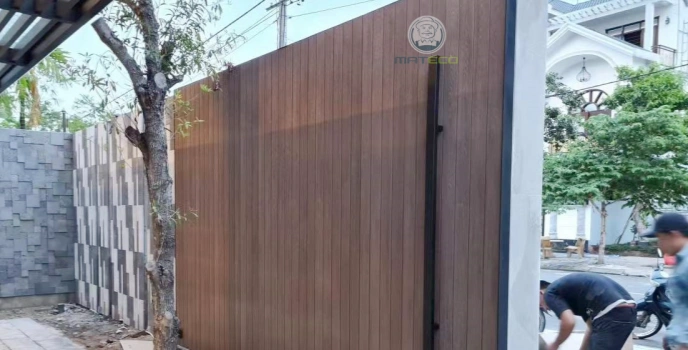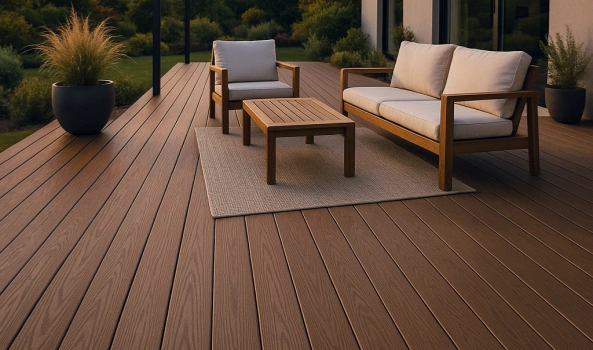10 Types of Wall Panelling
1. What is Wall Panelling?
Wall panelling is a method used in interior decoration that involves covering the walls of a room with panels made from various materials. This approach serves both aesthetic and functional purposes, offering an attractive way to conceal imperfections, enhance thermal insulation, and improve the acoustics of a space. Historically, wall panelling was made from wood and used in more traditional settings. However, with advancements in materials and design techniques, wall panelling has evolved to fit a wide range of interior styles, from classic to contemporary.
2. Popular Types of Wall Panelling
Wall panelling has come a long way from its traditional wood origins, incorporating a variety of materials and designs that cater to a wide range of tastes and functionalities. Here's a more detailed look at some popular types:
Wood panelling: This classic choice brings warmth and natural beauty into any space. It can vary from solid wood to veneers and is available in numerous finishes, from natural grains to painted surfaces. Species like oak, cedar, and pine are commonly used, each adding a distinct character to the room.
MDF panelling: MDF is an engineered wood product that's cost-effective and versatile. It's easy to paint and can mimic the look of real wood or be finished in various textures and colors. Its smooth surface makes it ideal for intricate designs and modern finishes.
Vinyl panelling: Known for its durability and ease of maintenance, vinyl panelling is resistant to moisture, making it suitable for bathrooms and kitchens. It comes in a vast array of designs, from patterns that mimic wood and stone to bold, contemporary colors.
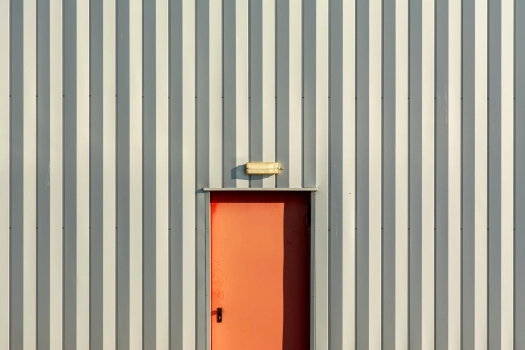
WPC panelling: Combining wood fibers and recycled plastics, WPC panelling is an eco-friendly option that offers the aesthetics of wood with enhanced durability. It's resistant to moisture, rot, and pests, making it suitable for both indoor and outdoor applications.
MATECO WPC is a WPC manufacturer with 15 years of experience. More WPC panels.
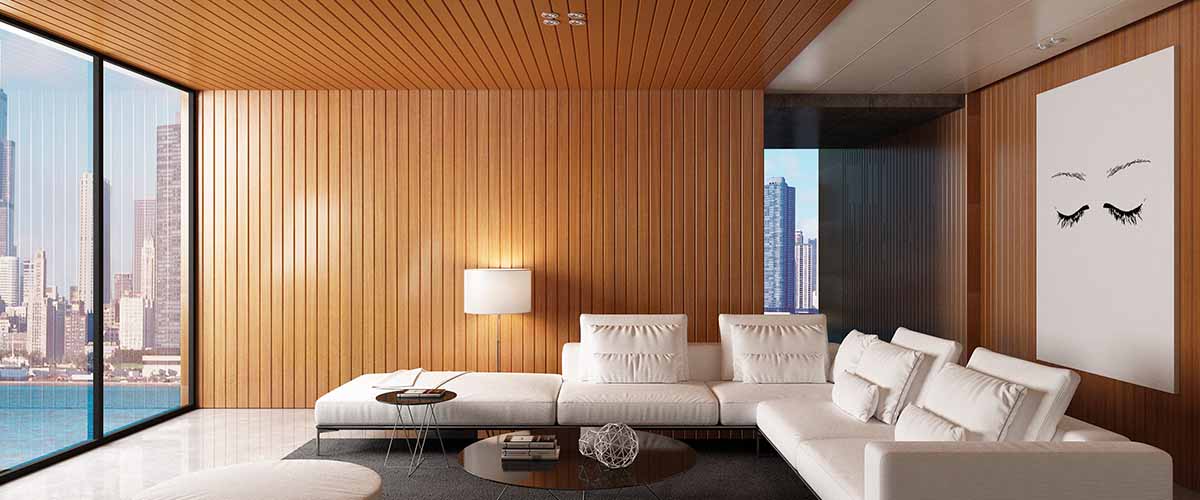
Acoustic panelling: Designed to improve sound quality by reducing noise and echo, acoustic panels are a functional choice for theaters, studios, and open-plan offices. They come in various materials, including foam and fabric-wrapped panels, and can be a stylish addition to any space.
3D panelling: Offering a modern and dynamic aesthetic, 3D wall panels add texture and depth to walls with their raised patterns. Made from materials like MDF, PVC, and gypsum, they can be painted or finished in various ways to create a unique visual impact.
Glass panelling: Glass panels can introduce a sleek, contemporary look while allowing light to flow through a space. They can be clear, frosted, or tinted and are often used in commercial environments for partitions and decorative features.
Stone and Brick panelling: Achieving a rustic or industrial look is easy with stone or brick veneer panels. They offer the appearance of natural stone or brick but are lighter and easier to install, making them a popular choice for accent walls and backsplashes.
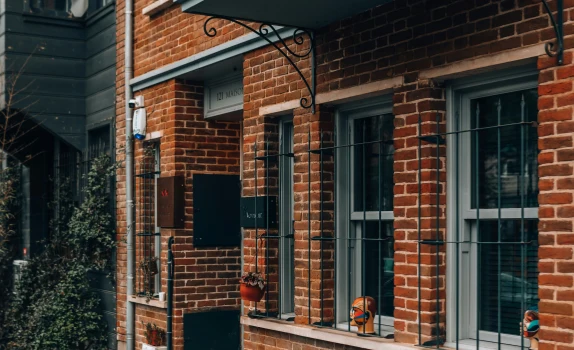
Metal panelling: Metal panels can add a modern, industrial vibe to a space. Available in materials like aluminum, copper, and stainless steel, they can be used for both interior and exterior applications, offering durability and a distinct look.
Bamboo panelling: As a sustainable and lightweight option, bamboo panelling brings a touch of the exotic and is suitable for both traditional and contemporary designs. It's particularly favored for its eco-friendly properties and unique texture.
Each of these wall panelling types offers unique advantages and can be selected based on the desired aesthetic, functionality, and budget. Whether you're aiming for a traditional, rustic, or ultra-modern look, there's a wall panelling material that can help you achieve your design vision while adding value and character to your space.
3. Advantages of Wall Panelling
Aesthetic Appeal: Wall panelling can significantly enhance the interior design of a space. It comes in various materials, colors, textures, and designs, allowing for a high degree of customization. This versatility makes it possible to achieve a wide range of looks, from traditional wood panels to modern, sleek finishes.
Durability and Longevity: Many types of wall panelling, especially those made from wood, MDF, or WPC, are durable and resistant to damage. This makes them a long-term solution for wall coverings, as they can withstand wear and tear better than paint or wallpaper.
Improved Insulation: Wall panels can provide an extra layer of insulation to a room, helping to keep it warmer in the winter and cooler in the summer. This can lead to energy savings over time. Additionally, certain types of paneling can improve sound insulation, reducing noise transfer between rooms or from the outside.
Conceals Flaws: Wall panelling can be used to cover up imperfections in walls, such as cracks, uneven surfaces, or outdated finishes. This can save on the cost and labor involved in extensive wall repairs or preparations for painting.
Increases Property Value: High-quality wall panelling can add to the aesthetic value and appeal of a property, potentially increasing its market value. It's a relatively affordable way to upgrade the look of a space without extensive renovations.
Versatility: Beyond aesthetics, wall panelling can be functional. Some panels are designed with built-in shelves or can be used to conceal wiring, improving the organization and functionality of a room.
Eco-Friendly Options: There are eco-friendly paneling options available made from sustainable materials or recycled products. These options allow for a reduced environmental impact while still providing the aesthetic and functional benefits of traditional paneling.
In summary, wall panelling offers a combination of aesthetic versatility, durability, ease of installation, and potential energy savings, making it an attractive option for enhancing interior spaces.
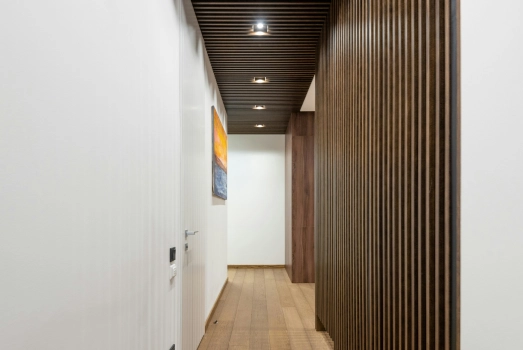
4. Global Perspectives on Wall Panelling
Wall panelling, a versatile element in interior and exterior design, exhibits unique characteristics influenced by regional cultures, climate conditions, and available materials. This diversity not only enriches the global design landscape but also offers a window into the adaptability of wall paneling to meet specific aesthetic and functional needs.
North America: In the USA and Canada, wood paneling has a long history, reflecting the abundance of forests and a preference for warm, natural finishes. From the rustic charm of reclaimed wood in country homes to the sleek, modern lines of maple or walnut in urban dwellings, North American wall panelling traditions lean heavily towards natural materials. Additionally, the trend towards eco-friendly materials has seen an increase in the use of WPC and bamboo panelling.
Europe: European wall panelling is deeply rooted in history, showcasing intricate woodwork and craftsmanship, particularly in classical and baroque interiors. Modern European design, however, embraces minimalism and functionality, with a strong preference for materials like MDF and 3D panels that offer clean lines and smooth finishes. In Scandinavia, the use of light wood panelling reflects the minimalist design ethos and the desire to maximize natural light.
Middle East: Wall panelling in the Middle East often features ornate woodwork and elaborate designs, reflecting the region's rich artistic heritage. Carved wooden panels and Islamic geometric patterns are prevalent, adding depth and texture to interiors. The use of stone and metal paneling is also common in both traditional and modern buildings, adding a touch of luxury and durability suited to the arid climate.
Australia: Australian design often incorporates wall panelling that reflects its sunny climate and love for the outdoors. Timber paneling, both in traditional homes and contemporary designs, remains popular for its natural aesthetic and durability. There's also a significant interest in sustainable and fire-resistant materials, such as WPC and metal panels, especially in bushfire-prone areas.
South America: In South America, wall panelling is often vibrant and colorful, reflecting the continent's rich cultural tapestry. Wood is widely used, with a preference for local species that imbue spaces with warmth and character. In modern urban homes, concrete and stone panelling are also prevalent, offering a cool respite from the tropical heat.
This global overview of wall panelling illustrates not only the adaptability of this design element to different environments and cultural contexts but also the shared human desire to create spaces that are both functional and beautiful. As we continue to explore and innovate within the realm of wall panelling, these regional characteristics offer a rich source of inspiration for designers and homeowners alike.
If you are looking for a WPC manufacturer, MATECO WPC will be your best choice.
Website: https://www.matecowpc.com
WhatsApp: +86-13380085620
Email: info@matecowpc.com




